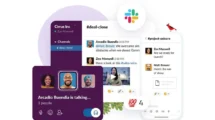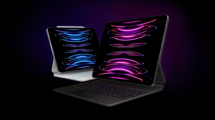The era of lightning fast data transfer is becoming a reality and after breaking ground with Li-Fi, scientists have discovered another method of transferring data with speeds exceeding 2GBPS using LED’s.
Cutting-edge research conducted at the King Abdullah University of Science and Technology by a team of scientists have created a nano-crystalline material which rapidly produces white light out of blue light and exhibited data speeds more than 2GB per second and can bring a transformation in the world of Wi-Fi.
Wi-Fi and Bluetooth technology have been available for some time, but scientists are trying to reduce the wavelength of electromagnetic waves which are used as a medium to transport the data. Scientists want to use the visible light communication using a section of the electromagnetic spectrum which are unregulated and also more energy efficient. VLC will also provide a way to mingle data transmission along with illumination and display technology e.g. ceiling lights could provide an internet link for laptops. Light emitting diodes will form the mainstay of such VLC application.
Visible light between the frequency of 400 and 800 THz (780–375 nm) are used for data communication. The technology uses simple fluorescent lamps to move data at 10 kbit per second or LEDs for up to 500 Mbit/s. Ethernet speeds of 10 Mbit/s were achieved over a distance of one to two kilometers using powerful LED’s and better optics.
VLC can be easily used as a means of communication with ease as there is no shortage of light producing devices like lamps, TV’s, traffic signs, commercial displays and car lights. The use of visible light is also less risky because the human eye can readily perceive them and thus take measures to protect their eyes. The VLC generates white light which is limited to about one hundred million bits per second.
However using a nanocrystal-based converter enables much higher data rates. When the crystal is illuminated by blue laser light, the crystals emitted green light while the nitride emitted red light. Together they combine to create a warm white light. Using these mechanism scientists was able to transmit data at the rate of two billion bits per second.




1 Comment